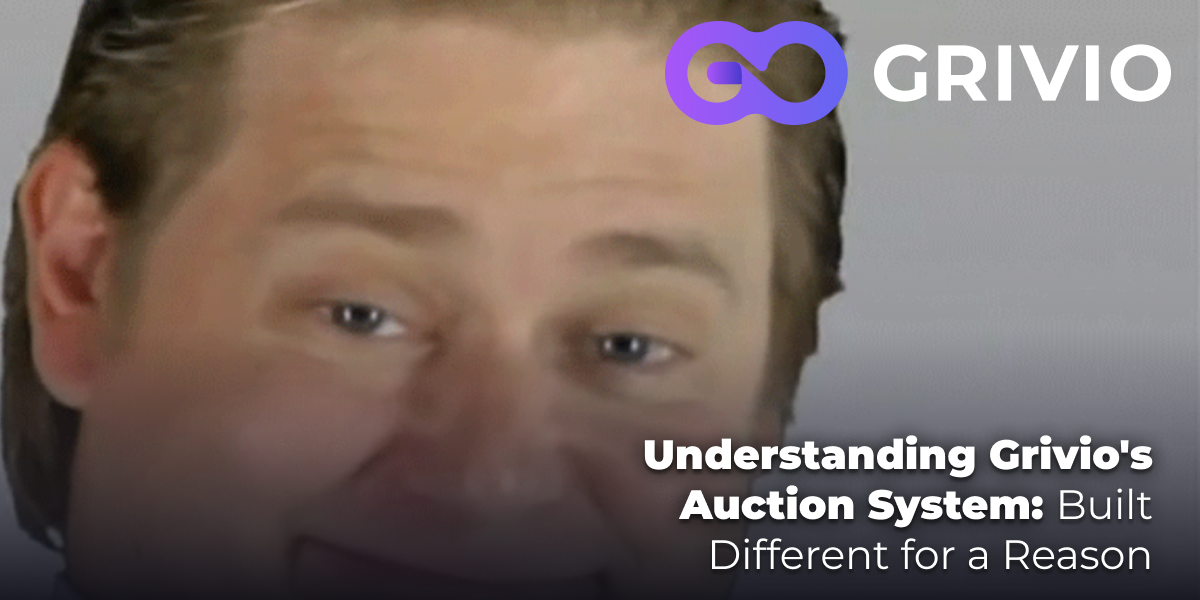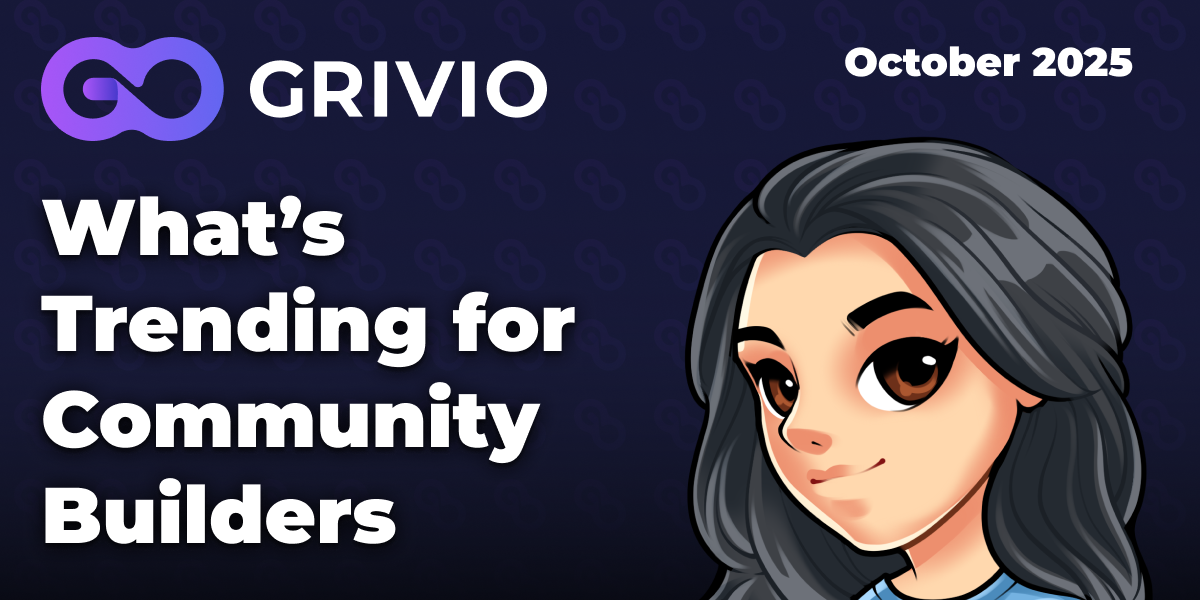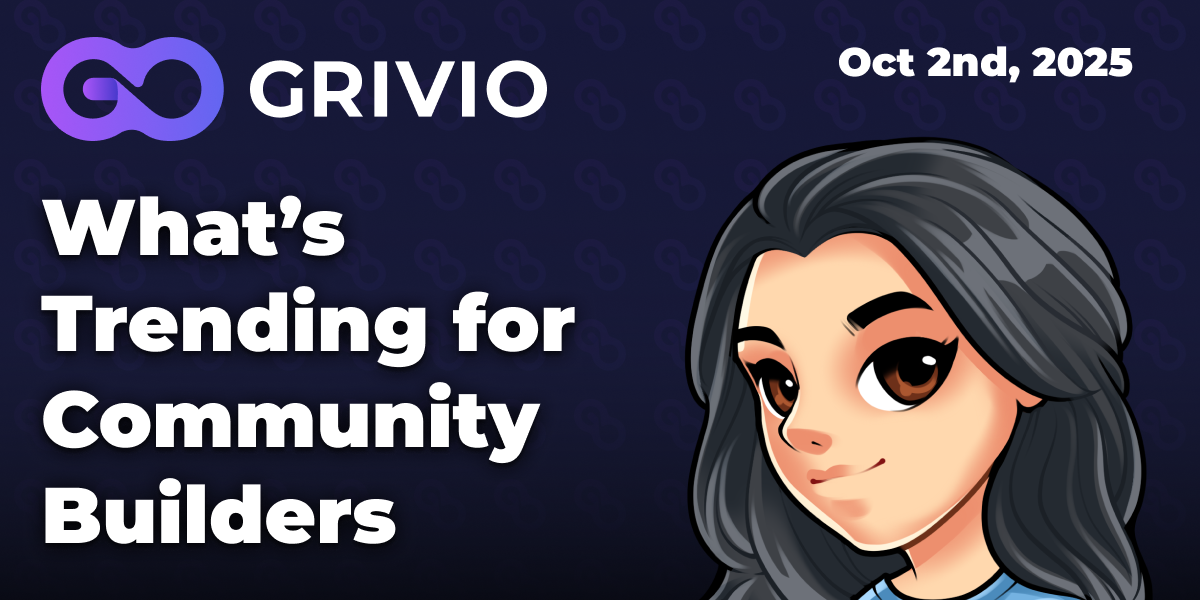The Community Builder's Balancing Act: Productivity and Enjoyment
shylor • April 30th 2025

Grivio connects you with vibrant communities of Grivians who share your unique interests, no matter how niche.

November 22nd 2025

October 22nd 2025

October 3rd 2025
shylor • April 30th 2025

Ask any long-term community builder what keeps them going, and you'll usually hear two themes: they're making meaningful progress, and they're enjoying the journey. When both elements are missing, communities tend to fade away.
Let's discuss a simple yet powerful framework that has been observed in thousands of communities. It comes down to two questions that every community builder should regularly ask themselves:
Are you getting things done?
Are you having fun?
The answers to these questions create four possible scenarios for your community-building efforts. Understanding where you stand can help you course-correct before problems become serious.
Getting Things Done + Having Fun = Sustainable Success
This is the sweet spot. You're making measurable progress toward your community goals while genuinely enjoying the process. Your enthusiasm is authentic, and your community members can feel it. The work feels meaningful, and even challenging tasks have a sense of purpose.
Signs you're here:
You look forward to community activities
You're seeing steady growth in whatever metrics matter to you
Problems feel like interesting challenges rather than overwhelming obstacles
You naturally talk about your community with friends
Members are starting to take ownership and help out
Communities in this quadrant aren't just successful today—they're building the foundation for long-term growth. The momentum feels natural rather than forced.
Getting Things Done + Not Having Fun = The Burnout Track
Your community is growing. Engagement is happening. From the outside, things look successful. But internally, you're losing your connection to why you started. The tasks feel like obligations rather than opportunities. Every notification becomes a source of stress.
Signs you're here:
You procrastinate on community tasks you used to enjoy
Interactions feel draining rather than energizing
You've become mechanical in your responses
The metrics look good, but you feel disconnected
You struggle to remember why you started this in the first place
This state is perilous because external validation can mask the internal warning signs. The community might look successful, but without course correction, you're headed for burnout.
Having Fun + Not Getting Things Done = The Social Club
You love your community. The people are great, the conversations are enjoyable, and you genuinely look forward to every interaction. There's just one problem: you're not making meaningful progress toward building something sustainable.
Signs you're here:
You enjoy every moment with your community
You've had the same small group for months or years
New members rarely stick around
You haven't implemented structure or systems
You're reluctant to "formalize" things for fear of losing the fun
These communities often make their founders happy in the short term, but struggle to grow beyond their initial circle. Without some attention to structure and growth, they remain perpetually small and vulnerable to dissipation if key members leave.
Not Getting Things Done + Not Having Fun = Why Even Continue?
This is the danger zone. You're not seeing results, and you're not enjoying the process. Every aspect of community building feels like a chore, and you're questioning why you ever started.
Signs you're here:
You avoid checking in on your community
Engagement is minimal or declining
You feel resentful toward members or the platform
You can go days without thinking about the community
The thought of working on it creates immediate stress
If you recognize yourself in this description, it's time for an honest self-assessment. This state is unsustainable and unfulfilling. Either find a way to shift to another quadrant or consider stepping back.
No matter which quadrant you're currently in, you can move toward the success state with intentional adjustments. Here's how:
If You're Getting Things Done But Not Having Fun
Reconnect with your purpose. Return to why you started this community. What excited you initially? What impact did you hope to make? Sometimes we get so caught up in metrics and growth that we lose sight of our original passion.
Find your flow activities. Every community builder has specific tasks they naturally enjoy. For some, it's creating content; for others, it's facilitating discussions or organizing events. Identify yours and delegate or minimize the rest.
Build in breaks. Sustainable community building requires rest. Schedule regular periods away from your community—even a day or two can provide perspective and renewed enthusiasm.
Create a personal connection. If your community has grown large, you might feel disconnected from individual members. Deliberately nurture relationships with a small group of core members who remind you of the human impact you're making.
If You're Having Fun But Not Getting Things Done
Define success clearly. You can't achieve what you haven't defined. What specifically would "getting things done" look like for your community? More members? Higher engagement? Regular events? Create concrete, measurable goals.
Start with minimal structure. You don't need complex systems to start making progress. Start with a straightforward structure, such as a weekly thread, a monthly challenge, or a basic onboarding process for new members.
Learn from similar communities. Find communities in your niche that have achieved what you're aiming for. What systems and practices have they implemented that you could adapt while preserving your community's unique culture?
Make progress visible. Track and celebrate small wins publicly with your community. This creates momentum and reinforces the value of structured growth without sacrificing the fun.
If You're Neither Getting Things Done Nor Having Fun
Take a genuine break. Step back temporarily to gain perspective. A week away from your community responsibilities can provide clarity about whether to continue and how to reshape your approach.
Bring in fresh energy. Consider inviting trusted members to take on leadership roles. Their enthusiasm might rekindle yours, and sharing responsibilities can make everything more manageable.
Simplify dramatically. Your community might be trying to do too much. What's the one core activity or purpose that matters most? Focus exclusively on that until you regain momentum.
Consider a pivot. Sometimes, the original community concept is no longer viable or no longer aligns with your interests. Be willing to have an honest conversation with members about shifting direction.
The communities that thrive in the long term have discovered how to create meaningful value while maintaining the founder's connection to purpose and joy. Here are strategies that support both sides of the equation:
Build Systems That Create Freedom
Counterintuitively, the right structures actually create more space for creativity and enjoyment. When basic community functions happen reliably without constant attention, you can focus on the aspects you genuinely enjoy:
Create templates for recurring events or posts
Develop simple but straightforward community guidelines
Build an onboarding process that runs smoothly
Establish predictable rhythms that members can count on
Measure What Truly Matters
The metrics you track shape your experience as a community builder. Choose measurements that reflect genuine community health rather than just surface-level growth:
Quality of conversations rather than just quantity
Member retention over time
Peer-to-peer connections forming
Community-initiated activities
Problem-solving success rates
Nurture Leadership at All Levels
Communities thrive when members take ownership. This creates both progress and enjoyment:
Identify potential leaders and invite them to take responsibility
Create clear paths for members to contribute in meaningful ways
Celebrate and highlight member-led initiatives
Build systems that can run without your constant presence
Schedule Joy Deliberately
Don't leave the "having fun" part to chance. Actually, plan for it:
Set aside time for the aspects of community building you most enjoy
Create regular opportunities to connect with members who energize you
Celebrate milestones—both yours and the community's
Document positive moments to revisit when motivation dips
Set a calendar reminder every 2-3 months to assess honestly where your community stands on the productivity-enjoyment matrix. Ask yourself:
Am I consistently accomplishing tasks that move this community forward?
Am I genuinely enjoying the process of building this community?
If I'm missing either element, what specific adjustments would help shift the balance?
This simple practice can prevent months of drift and help you catch potential issues before they become serious problems.
Building a community is a significant investment of your time, energy, and heart. When balanced correctly, it creates value not only for members but also for you, the builder. You deserve both meaningful progress and genuine enjoyment from this work.
Remember: the most successful communities aren't just those that grow the largest or fastest. They're the ones that create sustainable value while remaining places of authentic connection and purpose, starting with your own.
What quadrant is your community in right now? And what one step could move you closer to that ideal balance of productivity and joy?